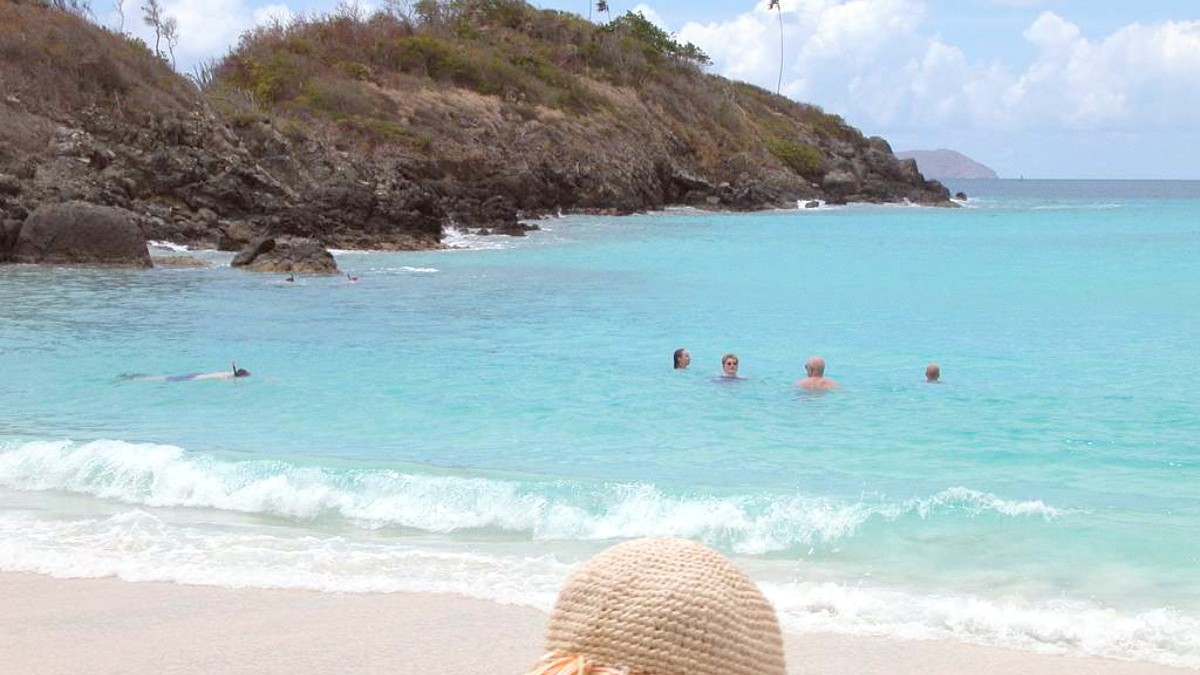
US Virgin Islands
The Virgin Islands National Park has over 20 marked trails, catering to various fitness levels. World-class sites for snorkeling and diving are abundant.
Cinnamon Bay Self-Guided Trail (0.5-mile loop through historical ruins), Francis Bay Trail (0.5-mile boardwalk for wildlife spotting), Peace Hill Trail (short uphill walk to sugar mill ruin with panoramic views).
Lind Point Trail (1.1-mile one-way from Cruz Bay Visitor Center to Salomon & Honeymoon Beaches), Reef Bay Trail (2.2-mile one-way descent to sugar mill ruins & petroglyphs; return ascent is challenging), Ram Head Trail (1.0-mile one-way coastal hike with dramatic ocean views).
Bordeaux Mountain Trail (steep, less-maintained trail to the island's highest point, for experienced hikers), L'Esperance Trail (long, historical trail, can be overgrown in sections, for a rugged experience).
All fishing in U.S. Virgin Islands waters calls for a local fishing license. Ensure you have the necessary permits before engaging in any fishing activities.
Opportunities to engage with St. John's culture through various avenues.
This annual celebration is the island's largest cultural event. It typically begins in mid-June and culminates on July 3rd (Emancipation Day) and July 4th (U.S. Independence Day). It features parades, calypso and soca music, traditional dances, and cultural performances.
An annual challenging road race from Cruz Bay to Coral Bay, usually held in February or March. While mainly a sporting event, it has a strong community and cultural aspect, drawing participants and spectators from across the islands.
Occasional local music performances or cultural events may be held at local venues or community centers; check local listings during your visit.
While formal community-based tourism initiatives are few, visitors can support local culture by prioritizing local businesses, restaurants, and shops over larger chains, and engaging respectfully with locals.
English is the official language and is universally spoken on St. John, so language barriers are not a concern for English speakers.
Engaging in casual conversation with locals presents opportunities to learn more about the island's culture and daily life.
St. John's serene environment supports relaxation and wellness.
Some private villas or small guesthouses may offer private yoga sessions or occasionally host small retreats.
The island's quiet beaches and natural settings form perfect backdrops for personal meditation and relaxation.
Traditional healing practices are not a main focus for tourism on St. John.
While St. John is known for its natural beaches, some resorts have pool access for guests.
Located on nearby Lovango Cay (a short boat ride from St. John), this spot features a popular beach club experience with lounge chairs, food, and drink service.
A visit to Lovango Rum Bar offers an unique way to enjoy a day of relaxation and amenities off the main island.
St. John has a more laid-back nightlife scene compared to some other Caribbean islands, mainly centered around bars and live music.
Few dedicated nightclubs exist on St. John. Nightlife mostly revolves around bars with music, where dancing often occurs, especially when live bands play.
Bars generally close by midnight or 1 AM on weekdays, and perhaps a bit later on weekends, depending on the crowd and season. St. John's nightlife is more about relaxed socializing than intense clubbing.
St. John does not have dedicated theater venues. Occasional local performances or community plays may be held at community centers; check local listings.
Some local bars may host karaoke nights, adding a fun, interactive element to the evening entertainment.
Look for bars that offer pool tables, darts, or other casual games for a relaxed evening with friends.
Occasionally, local gatherings or events might include beach bonfires, creating an unique and memorable evening atmosphere.
Drink responsibly. Do not drink and drive; taxis are available. Public consumption of alcohol is generally permitted on beaches but check local regulations.
Shopping on St. John focuses on local crafts and resort wear.
Limited high-end boutiques are few, mainly found in Cruz Bay offering resort wear or specific brand names. Duty-free shopping opportunities are more extensive on St. Thomas.
Support local artists and businesses directly; this greatly helps the local economy. Be cautious about purchasing items made from protected marine life (e.g., certain types of coral, conch shells if harvested unsustainably, turtle products), as these may be illegal to import back home.
For U.S. Citizens returning to the mainland, the U.S. Virgin Islands grant a generous duty-free allowance. You can bring back up to $1,600 worth of goods duty-free, significantly higher than the standard $800 allowance from other countries.
Embrace the island's laid-back pace, whether you are hiking a trail, enjoying a snorkel, or simply relaxing on the sand. St. John delivers memorable experiences.